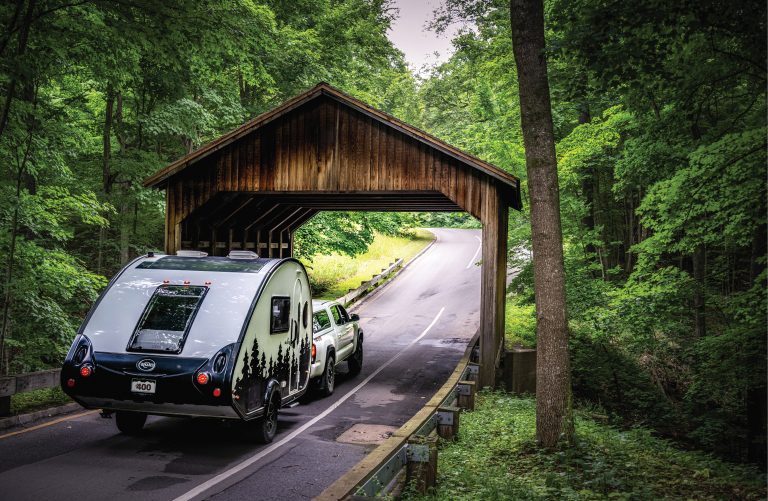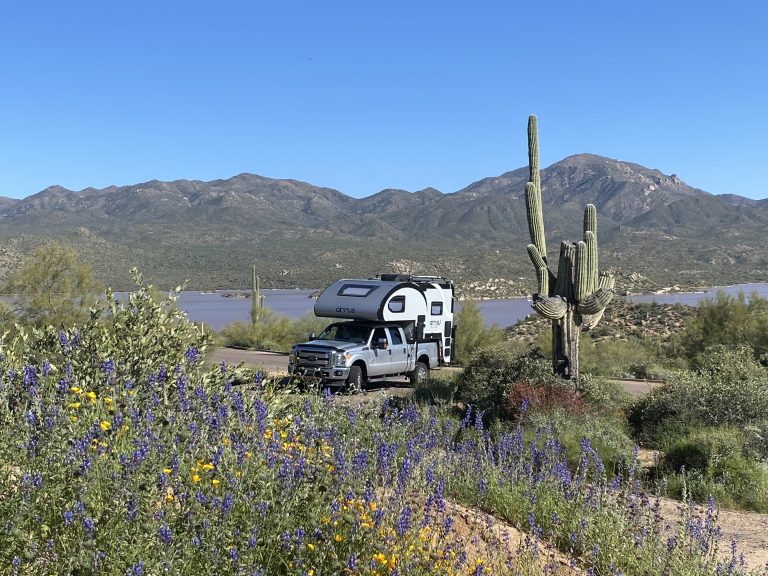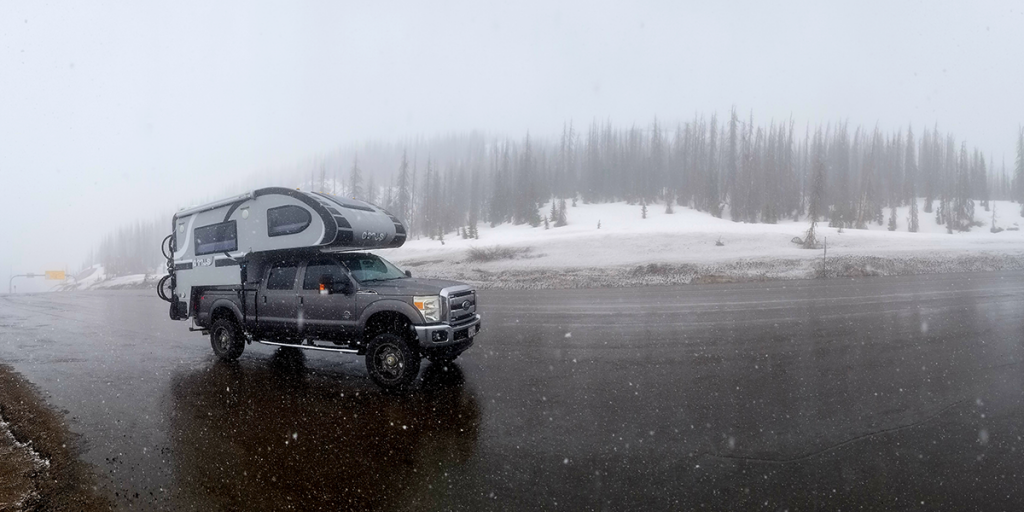RV Winter Driving Tips
Whether you’re a snowbird driving south to spend the winter months in warmer weather or a diehard RV-er who loves the idea of traveling when Ol’ Man Winter is around, RV-ing in snow and ice requires an equal mix of equipment and education. When the temperature starts plummeting, you’ll be faced with challenges that summer driving doesn’t have: icy roads, sleet, blustery winds and inches (or feet!) of the white stuff obscuring the road.
We’ve put together a quick list of tips from experts and RV-ers—what you’ll need when driving in winter weather and how to navigate when the road conditions are less than optimal. That being said, the general consensus is that when the weather is bad or if blizzard conditions are expected, the best advice is to stay put. As The General RV blog says, “The first tip for how to drive your RV in poor weather conditions is to not drive your RV in poor weather conditions.”
That means you need to know what conditions are expected. Use the AccuWeather app to receive alerts when weather changes or turns severe and the SafeTravelUSA website for updates on road conditions.
Equally important is to have a Plan B, adds Crossroads Trailers. “Twenty miles in treacherous weather may be too much; be flexible and willing to get off the road. The cost for an unplanned hotel stay pales in comparison to the cost and trauma of having your RV pulled out of a ditch or the expense and danger of a jack-knifed trailer.”
Be Proactive
Before you start out on your trip, identify places (rest stops, service stations, campgrounds or parking lots) along your route where you can stop if needed. But keep in mind that not all RV parks are open year-round, writes Jason and Nikki Wynn on their blog, Gone with the Wynns. “Many campgrounds close during the winter, especially in areas where it snows. Surprisingly a ton of State Parks close as soon as snow hits the ground, so do your research!”
Have your RV or tow vehicle and trailer serviced, checking battery, fluids, seals and wipers, and verifying that your brakes and lights are in full working order, says Crossroads Trailers. Check the tire inflation before you leave and then again each morning, since they can lose pressure as the temperature drops. Does your RV have automatic brakes or brake controllers? Make sure they are designed for use in snowy conditions.
RV Tipster has a suggestion that applies equally in warm weather or cold: install a rear camera to address the blind spot behind your motorhome or travel trailer. Then, each morning, check that your mirrors are adjusted properly to give you maximum viewing range. Convex mirrors can also help alleviate blind spots.
If you’re towing a trailer, consider a weight distribution hitch or sway control hitch. The weight distribution hitch helps all four tires have a more solid grip on the road and a sway control hitch can help to keep your trailer from drifting, explains TripSavvy.
Make sure your emergency kit is fully stocked and pack for unexpected stops. DakotaPost and Allianz Travel Insurance list the following must-haves:
- Nonperishable food and 5 gallons of drinking water (kept in a heated storage space)
- Extra medication
- Sleeping bags rated for zero degree temperatures
- First aid kit
- Weather band radio
- Spare wiper blades
- De-icer for thawing frozen locks, hinges and doors
- Shovel and ice scraper
- Flashlight, pocketknife and basic toolkit (wrenches, pliers, screwdrivers, tape, wire cutters, etc.), jumper cables,
- Flares or glow sticks, warning cones
- Extra antifreeze and fuel, extra propane tanks
- A “white gas” camping stove (does not require propane)
- Gasoline-powered generator
- Solar charging panels for re-charging house batteries
Pack for Snow
A good snowbrush (one with a long handle so you can reach all the spots) is a given as are snow tires for your RV or tow vehicle and trailer. According to Allianz Travel Insurance, the “highway tread” tires that RVs have fresh off the factory lines aren’t great at maintaining traction in snow and ice. This, combined with the rear-wheel drive on most RVs, can make it challenging to keep control when skidding.
As for chains, not only can they provide extra traction on snow-covered roads, they may also be required by state regulations. (Check out state chains laws on AAA’s Digest of Motor Laws: Tire Chains (US and Canada) and Tire Chains ‘R’ Us, or download Laclede Chain’s State Chain Laws pdf.) Either install them yourself or pay a professional to do it for you. Vulcan Tire has a YouTube video with tips on installing chains on a Class C motorhome.
Drive Defensively
Snow, sleet, black ice, heavy fog, blustery winds—any and all may occur as you travel the roads in your RV. These are conditions that are risky when driving a standard vehicle, but even more problematic when navigating in a large motorhome or towing a trailer.
Again: if the roads are snowy, slippery or covered with black ice, don’t try your luck. Those conditions are risky enough for a front-wheel drive car. When towing a trailer or driving a rear-wheel drive motorhome, it might be almost impossible to keep your rig under control. And considering that there will be other drivers on the road, the potential for accidents is even greater. Wait it out and then hit the road when it’s clear and safe.
Low beams will provide better visibility than bright lights that will reflect back off the snow, says BlueDog RV. And follow the slow and steady mantra. Tempting as it can be to try to reach your destination as soon as possible to get off the road and out of the weather, it will only increase the risk of skidding or having the trailer fishtail behind you. Leave plenty of space between your RV and the vehicle ahead of you, and if you’re starting to feel unsafe, pull off the road.
Last tip: if you really want to feel secure on winter roads, consider taking an RV driving course. Some options include the RV Driving School, My RV School and RV Basic Training
Recent Articles





